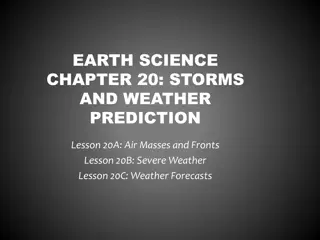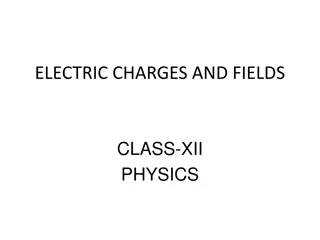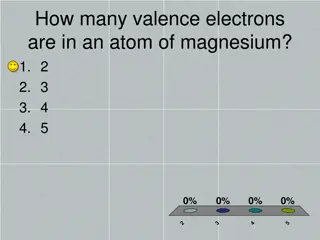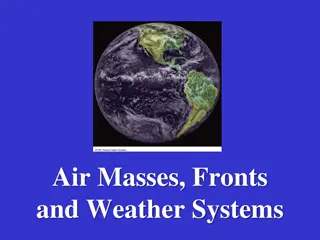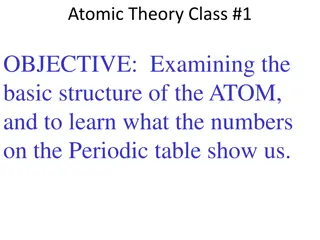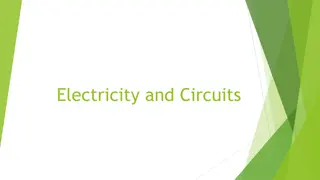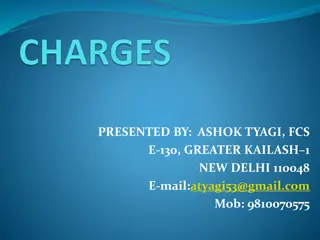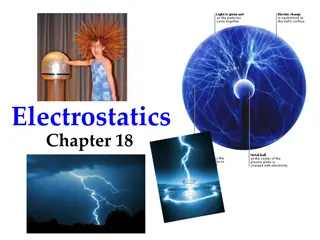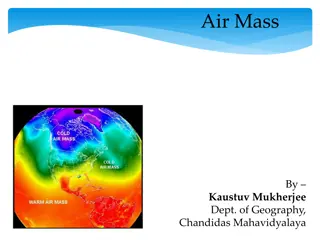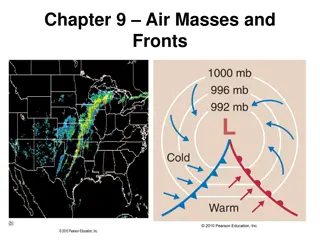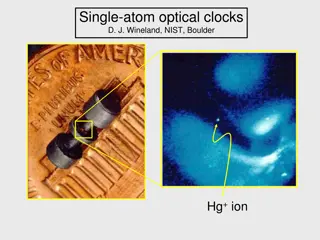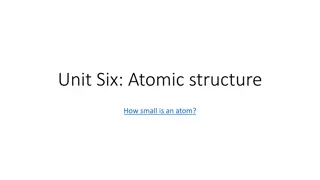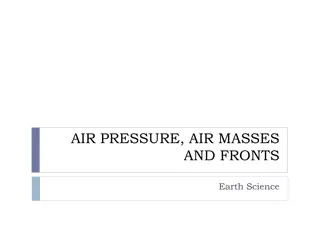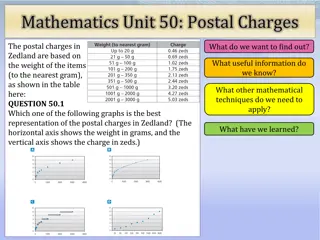Atomic Charges and Masses Calculations
Calculate the charges and masses of various ions and atoms, including hydrogen, sodium, chloride, calcium, nitrogen, and more. Explore scenarios involving electron count, electrical forces, gravitational forces, and their effects. The content encompasses physics concepts related to atomic structure, ionization, and forces at microscopic and macroscopic levels.
Download Presentation

Please find below an Image/Link to download the presentation.
The content on the website is provided AS IS for your information and personal use only. It may not be sold, licensed, or shared on other websites without obtaining consent from the author. Download presentation by click this link. If you encounter any issues during the download, it is possible that the publisher has removed the file from their server.
E N D
Presentation Transcript
(a) Find to three significant digits the charge and the mass of 1. an ionized hydrogen atom, represented as H +. Suggestion: Begin by looking up the mass of a neutral atom on the periodic table of the elements. (b) Find the charge and the mass of Na +, a singly ionized sodium atom. (c) Find the charge and the average mass of a chloride ion Cl that joins with the Na + to make one molecule of table salt. (d) Find the charge and the mass of Ca+ + = Ca2+, a doubly ionized calcium atom. (e) You can model the center of an ammonia molecule as an N3 ion. Find its charge and mass. (f) The plasma in a hot star contains quadruply ionized nitrogen atoms, N4+. Find their charge and mass. (g) Find the charge and the mass of the nucleus of a nitrogen atom. (h) Find the charge and the mass of the molecular ion H2O .
(a) Calculate the number of electrons in a small, electrically neutral silver pin that has a mass of 10.0 g. Silver has 47 electrons per atom, and its molar mass is 107.87 g/mol. (b) Electrons are added to the pin until the net negative charge is 1.00 mC. How many electrons are added for every 109 electrons already present?
The Nobel laureate Richard Feynman 3. once said that if two persons stood at arm s length from each other and each person had 1% more electrons than protons, the force of repulsion between them would be enough to lift a weight equal to that of the entire Earth. Carry out an order-of-magnitude calculation to substantiate this assertion.
(a) Two protons in a molecule are separated 5. by 3.80 10 10 m. Find the electric force exerted by one proton on the other. (b) How does the magnitude of this force compare to the magnitude of the gravitational force between the two protons? (c) What If? What must be the charge- to-mass ratio of a particle if the magnitude of the gravitational force between two of these particles equals the magnitude of electric force between them?
Suppose that 1.00 g of hydrogen is 8. separated into electrons and protons. Suppose also that the protons are placed at the Earth s north pole and the electrons are placed at the south pole. What is the resulting compressional force on the Earth?
Two small beads having positive charges 3q and q are fixed at the opposite ends of a horizontal, insulating rod, extending from the origin to the point x = d. As shown in Figure P23.10, a third small charged bead is free to slide on the rod. At what position is the third bead in equilibrium? Can it be in stable equilibrium?
Review problem. In the Bohr theory of the hydrogen atom, an electron moves in a circular orbit about a proton, where the radius of the orbit is 0.529 10 10 m. (a) Find the electric force between the two. (b) If this force causes the centripetal acceleration of the electron, what is the speed of the electron?




